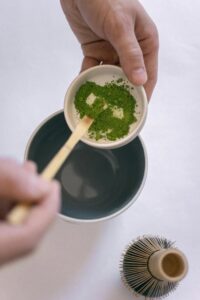Simple Solution Saturday is today when I bring you little steps to save, because every little penny certainly adds up.
Ever have onions that sat too long and started sprouting?
The greens of those onions can be chopped up and used as a replacement for scallions or chives in recipes.
In order to ensure that these onion greens grow to their fullest potential, keep them in a warmish, dry place. If they’re wet, they’ll start molding instead of growing. I usually either keep mine on a vegetable rack or on the window sill.
As you can see, I tried putting one onion in a cup with a tiny little bit of water for the roots to soak in, but the greens grew better without that water.
To use, simply cut the greens off the onions, chop up the greens as you would scallions, and then add them to recipes improved by a subtle sharpness.
Simply cut off the roots with a bit of the white part. Set this aside. Use the scallions as you typically would.
Take the reserved roots and white and partially submerge them in a cup of water. You’ll want only half an inch or so- enough that the roots stay underwater, but not the rest.
Every day check to make sure that water remains. If it gets finished up, add more water.
Within no time, you’ll have new green shoots growing from your whites. You can keep on adding water until the shoots reach the desired length, or you can transfer it to a container with dirt (an old yogurt cup or disposable cup will do) where it will probably thrive even more (as long as you remember to water).
Whenever you have a recipe calling for scallions, just trim the ends of your scallion plant, keep on watering, and your scallions will replenish themselves.
Tune in next Saturday for the next Simple Solution to Save.








